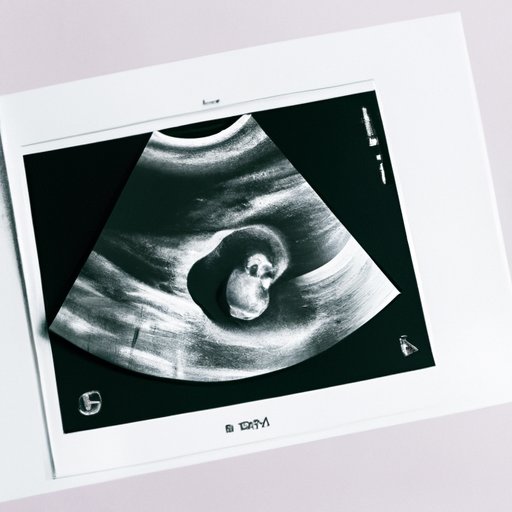
I. Introduction
Anticipating the arrival of a baby is an exciting experience for parents. Among the many things that parents look forward to during pregnancy is discovering the gender of their baby. While some parents prefer to let the gender reveal be a surprise during delivery, others want to find out as soon as possible. There are several different methods available to determine the gender of a baby, ranging from medical to home and cultural methods. This article delves into these methods to help you decide when and how to find out the gender of your baby.
II. The Medical Method
Medical methods for gender prediction involve advanced technology and are performed by healthcare professionals. The most common medical method is the ultrasound scan, which can determine the gender of a baby as early as 16 to 20 weeks into the pregnancy. Ultrasound scans work by using high-frequency sound waves to create images of the fetus. The scan itself is painless and doesn’t carry significant potential risks. However, since the accuracy of ultrasound scans heavily depends on the fetus’s position and gestational age, there’s a small chance the technician may make a mistake in identifying the gender.
Another medical method is amniocentesis, which is conducted around 16 to 20 weeks and involves taking a sample of the amniotic fluid surrounding the fetus for genetic testing. While amniocentesis is more accurate than ultrasound scans, it carries higher risks, including miscarriage. It’s typically only performed for medically necessary reasons and not for gender prediction alone. It’s crucial to talk to a healthcare provider to evaluate the benefits and risks of these medical methods.
III. The Home Method
Home methods for gender prediction often involve old wives’ tales and other folklore practices. For instance, one popular method is the Chinese gender predictor chart, which dates back to the Qing Dynasty and works by matching the pregnant mother’s age and the month of conception to predict the gender. Another popular home gender prediction method is the baking soda test. This test involves mixing urine and baking soda, and if the mixture fizzes, it’s believed to indicate the baby’s gender.
However, it’s important to note that these methods lack scientific evidence and their accuracy and reliability are questionable. They can also present some risks, such as sparking unnecessary anxiety or false expectations. If parents choose to use these methods for fun, it’s essential to recognize their limitations and seek medical confirmation before making any concrete plans based on them.
IV. The Cultural Method
Culture can play an essential role in gender prediction during pregnancy. Different cultures hold diverse beliefs and practices when it comes to anticipating a baby’s gender. Traditional beliefs may also impact the choices parents make during pregnancy. For instance, some cultures believe that certain foods or superstitions can influence the gender of a baby. Other cultures may stress the importance of maintaining balance and avoiding the temptation of finding out the gender, opting for surprises instead.
Gaining an understanding of these cultural attitudes not only broadens our perspectives but also enables us to respect and appreciate diversity. While some traditional practices may be outdated or pose risks, many cultural practices reflect deeper meanings and values that add richness to our experiences.
V. The Emotional Impact
Timing of gender reveal can also have emotional and psychological implications. For some parents, the anticipation of finding out the gender can be exciting and helps them bond with the baby. For others, the idea of a surprise or the focus on the baby’s gender may not be as important. They may instead prefer to wait until later in the pregnancy or even birth before learning the gender. Revealing the gender also carries the potential to shape expectations and attitudes towards parenting.
It’s therefore essential to support individual parental preferences, respecting their autonomy, and being sensitive to their reactions. It’s important to remember that gender is only one aspect of a person’s identity, and that parents can foster a nurturing and accepting environment for their child, regardless of their gender.
VI. The Gender-Neutral Approach
Another trend that’s growing in popularity is opting for a gender-neutral approach to parenting. Gender-neutral parenting involves creating a gender-free environment, where children aren’t subjected to gender stereotypes or pressure to conform to gender norms. Parents who adopt this approach use gender-neutral pronouns and clothing, and also avoid gender-specific toys and colors. Some parents also choose not to reveal their baby’s gender to others in an attempt to foster an equal and diverse upbringing.
While this approach can empower children to be themselves without limitations, it may not be feasible or desirable for every family. It’s important to acknowledge that gender neutrality doesn’t mean completely disregarding gender but celebrating the individual and avoiding stereotypes and rigid expectations.
VII. Conclusion
There are different methods available for gender prediction during pregnancy, each with its benefits and risks. Whatever method parents choose, it’s essential to be informed, cautious, and respectful in their decision-making process. Seeking medical advice and verification can ensure accuracy and prevent undue stress or harm. Cultural and emotional factors must also be taken into account, along with supporting individual parental preferences. A gender-neutral approach can foster acceptance and inclusivity, paving the way for a brighter future for all children.





